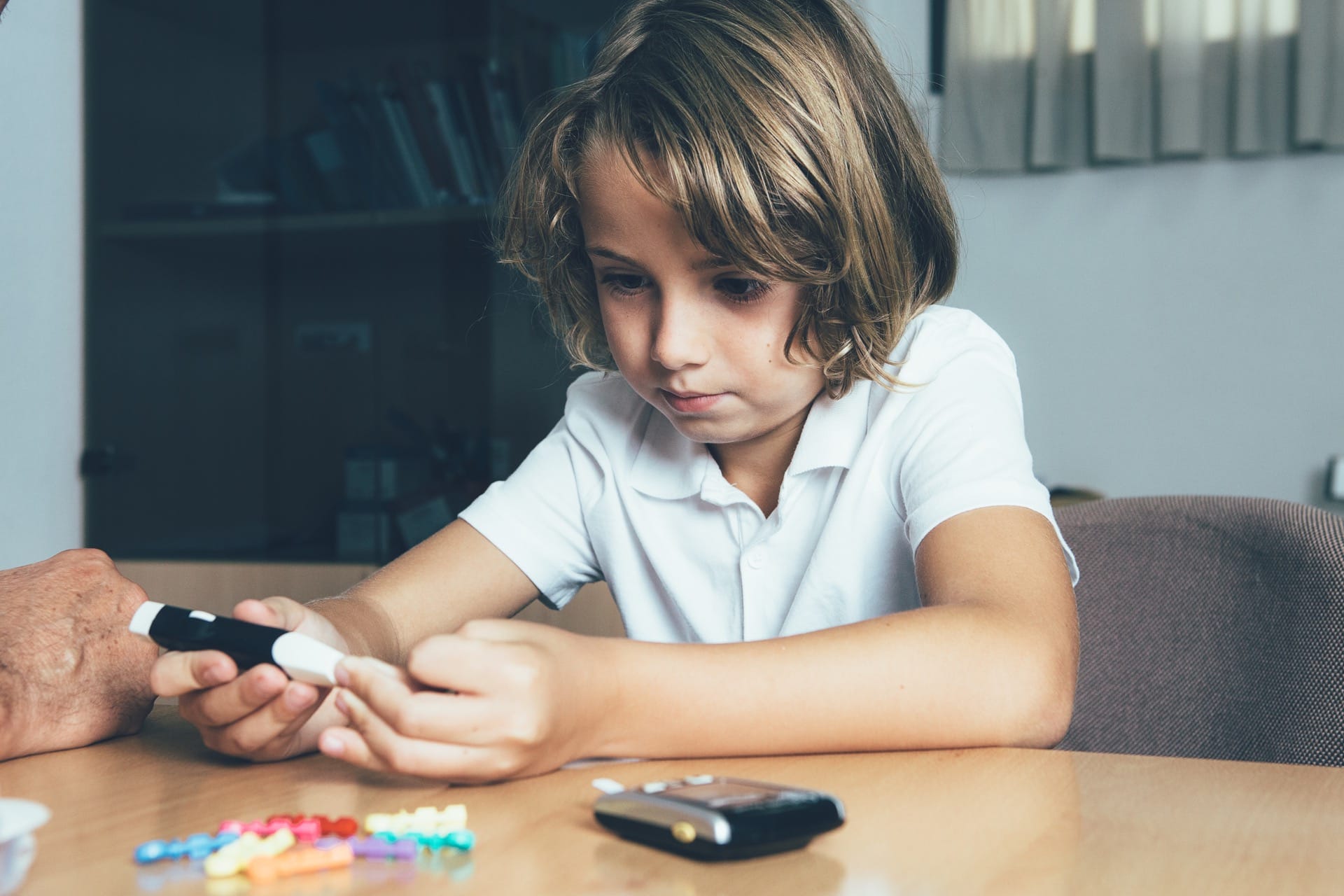Type 1 diabetes is the more common type of diabetes to be diagnosed in children and young people. According to the National Diabetes Services Scheme (NDSS), in June 2020 there were over 14,300 children and young people aged 0-20 years with type 1 diabetes, making up 11% of the total number of Australians living with type 1 diabetes. The number of people developing type 1 diabetes is increasing, alongside other types of diabetes.
Type 1 diabetes is an autoimmune condition, which occurs when the body’s immune system destroys the insulin-producing (beta) cells in the pancreas. This means that a person with type 1 diabetes does not produce any insulin – the hormone needed to manage blood glucose levels. It usually presents in childhood or young adults but can develop at any age.
The symptoms of type 1 diabetes usually have a rapid-onset and include thirst, frequent urination, tiredness and weight loss. They are often referred to as the 4Ts:
- Thirsty
- Toilet
- Tired
- Thinner
If your child displays these symptoms, it is important that you seek urgent medical advice. If not diagnosed and treated quickly, they can develop life-threatening Diabetic Ketoacidosis (DKA) because of insulin deficiency and the inability to use glucose as a fuel. Early detection, diagnosis and treatment are therefore critical. According to Diabetes Australia, 640 people end up in hospital each year because the early signs of type 1 diabetes are missed.
The exact cause of type 1 diabetes is not yet known. However, the condition is more common if there is a family history of type 1 diabetes and if a person has other autoimmune conditions such as thyroid or coeliac disease. It isn’t related to lifestyle factors such as diet and exercise, although these are important in the management.
There is also no known cure for type 1 diabetes and we don’t know how to prevent it developing. However, researchers are making progress towards a cure. You can find out more about this research by visiting the JDRF website.
The treatment of type 1 diabetes includes replacing insulin through regular injections or via an insulin pump. Insulin doses then need to be balanced with food intake and activity levels to keep blood glucose levels within a certain range (as close as possible to someone without diabetes). A child with type 1 diabetes will also need to monitor their blood glucose levels regularly, either using a fingerprick blood glucose monitor or continuous glucose monitor, to help with adjusting insulin doses.
You can find out more about type 1 diabetes by visiting:
- The Juvenile Diabetes Research Fund Australia website
- Diabetes Australia
- As1diabetes
References:


